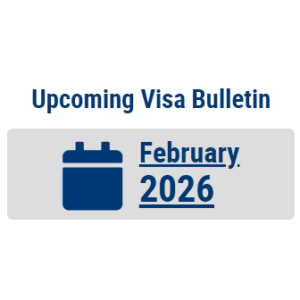About DV 2024 Case Numbers
Okay, so I finally found the time to write this long-awaited and important article concerning DV 2024 case numbers.
Background
Based on several years of experience, I had presented certain realities concerning case numbers in this previous article. I had identified different case number ranges, said whether they could be considered as high or low, suggested their chances of being scheduled for interview and predicted their likely month of interview. All that, the result of observation and interpolation of data from DV programs before DV 2024.
The New Experience
Then came the release of the DV 2024 Lottery results. And with it, general panic because everyone already had an idea of what high case numbers were (from previous years), and most believed that their chances of being interviewed were lowered considering their case number (which they believed were high).
Some Realities to Consider
Now, before going further, we must remember that height is relative: things are considered high in relation to others. If (many) others are not as high, then the thing concerned is seen as high. But when many others (or most) are higher, then the thing in question becomes low. Something I guess you know!
The same applies in the Diversity Visa Program. A case number could be considered as high because it is higher than (many) others. If many others are higher than it, then it is no longer high. Another thing to underline is that those panicking hadn’t realized that a different ‘numbering system’ had been applied to most regions during the DV 2024 selection process.
The AF Example
For several years, case numbers from the various regions followed a similar pattern. For example, for the Africa region, case numbers were observed to go up to 60,000 plus at most in recent years.
With that, case numbers in the vicinity of 60,000 were not only seen as being high; they were actually high.
And those that were far below were the low or relatively low ones.
In the DV 2024 Program, case numbers much higher than 60,000 are being reported from the Africa region. Based on the explanation provided earlier, case numbers that were known to be high from previous years obviously and automatically cease to be high. They have become low or relatively low because there are many others much higher than they are.
With case numbers as high as 120,000 plus being reported for the Africa region, a case number like 63,000 (which in recent years was a very high one) becomes relatively low.
Same for All Regions
The same applies to all other regions. In Europe where the highest case numbers in recent years were in the mid 30,000s for example, having a case number of 33,000 in the DV 2024 Program would inspire fear in someone who doesn’t have the necessary experience – without doubt. But when you consider that there are other case numbers as high as 60,000 from the Europe region being reported, then you’d understand that although 33,000 has been a very high case number in recent years, in the DV 2024 Program, it isn’t!
The Truth
Because the overall case numbers selected for the DV 2024 Program are more extensive than in past years, that has made case numbers which were high ones during previous years to become relatively low in the DV 2024 Program.
Those who do not know or understand such reality applied what they had learned from previous programs to the DV 2024 Program, leading to the panic experienced when DV 2024 case numbers were initially revealed.
But that shouldn’t have been. You needed to be experienced in the Diversity Visa Program to have determined the difference. You needed to know that much higher case numbers are being reported to realize that case numbers considered high in previous programs are not, in DV 2024.
So most DV 2024 case numbers that have been/are being regarded as high are actually not. When the first cut-off numbers for the DV 2024 Program are released next month and they show how extensive the October interviewing range is, then many applicants will understand that their case number is actually much lower – and therefore much safer – than they had previously imagined.
The Prospects?
This issue is a relatively new situation that has occurred in the DV Program. We can not tell how far into the future the State Department will continue to apply this approach (i.e. the numbering system used during the DV 2024 selection process).
In case they maintain this system for a number of years, we will have the opportunity to observe it long enough to determine what the new ‘normal’ is – for future use. That will enable us to predict all of the parameters presented in the previous article. We will be able to say – for each region for example – what high case numbers are, what low case numbers are, what their respective chances are, as well as their likely time of interview during the Program year.
But that can only happen when this new system has been implemented for at least a few years.
Meanwhile, it is still too earlier to say if this system will apply for some time to come, or if it is just a short-term experience being conducted by the Department for one reason or the other.



Hi!
My case number is around AS 33000 in Burma. There are many high numbers here, we are very worried about that, could we get a chance?
Hi:
You could get a chance, but there’s no guarantee.
Hi Rod,
given the fact that we see case numbers for the EU within the 60K, would you presume that 2024EU42XXX still has a good chance for a interview or would you say that it is still a high number? Looking at the bulletin board for the first 3 months it seems that they are in line with previous year and they are not calling higher numbers, at least for Europe. Any thoughts? Thanks, Nicole
1. 42K still has a good chance in Europe.
2. It’s still early for high case numbers to be called.
hi. Cn 2024AF 69K any chances of being interviewed ?
Your chances will largely depend on your assigned embassy.
hi
my case no for DV2024 is at around 28000 from asia country, Bhutan.
any chances.
Thank you
Yes, there’s chance.
Interesting. Even though I’m not panicking, I wonder what such a “high” (or medium, or low?) case number as EU00060593 would mean in my case. Have been selected in the DV-2024 for a European Country. I contacted a lawyer in the US (I am heer under another visa that would allow adjustment of status) and he was completely confused, saying he has never seen such a high case number before.
Hi Rod:
Thanks for your comment. We offer guidance for the Diversity Visa program as well. Our Guidance Program may be of interest to you: https://diversityvisaguidance.com/